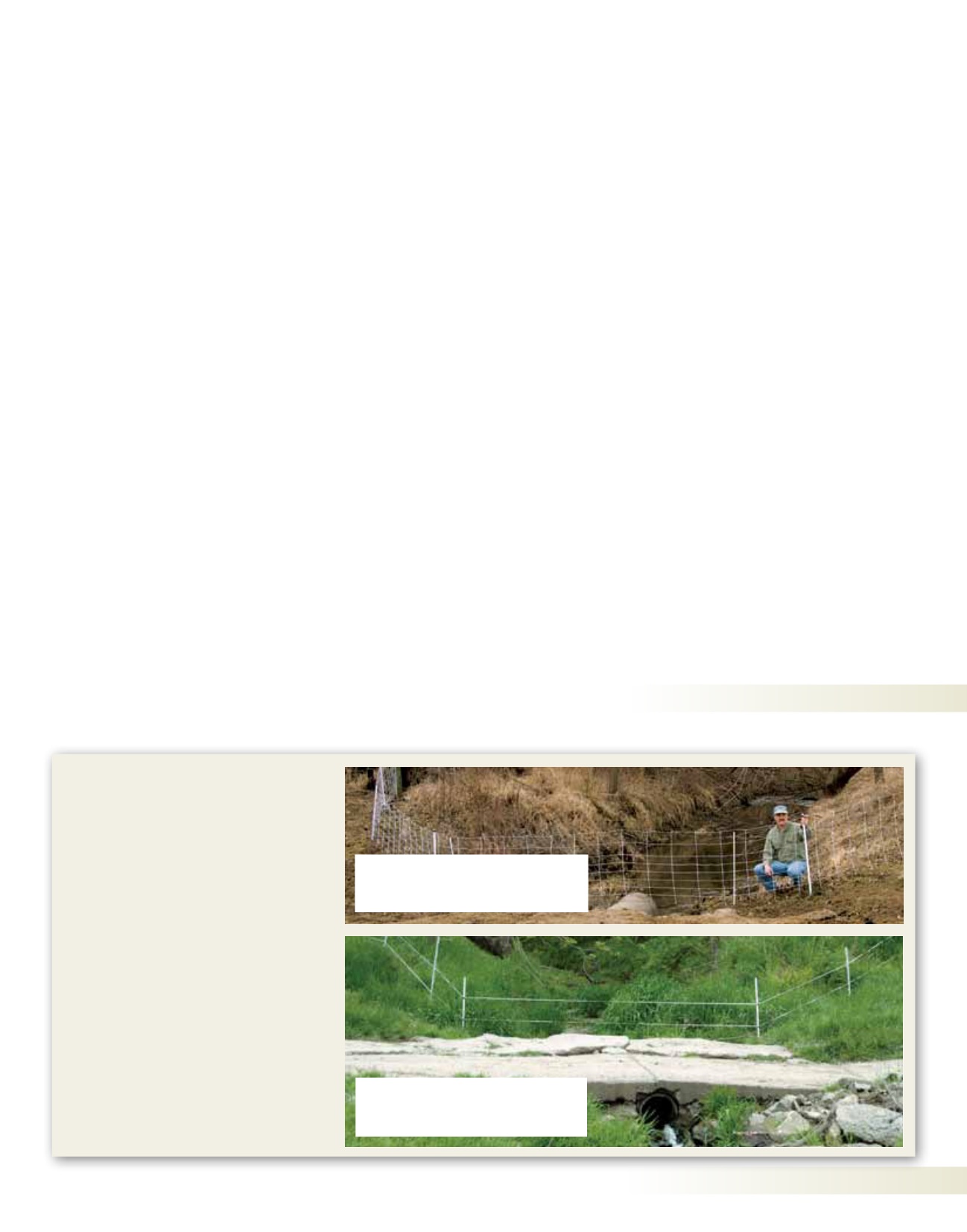
Before you buy or build a fence…
Common key fence questions—
Q. What is the fence’s location?
Is it
flat? Or does it go over hills and
ditches and around curves? Is it
covered with brush, trees or open
grass? Are the soils rocky, very
soft, sandy or firm?
A.
The optimum fence design hinges on
answers to these questions.
Q. Do the animals know the fence?
A.
Local animals and wildlife get to
know a fence by appearance, location
and
pain memory
. If it’s a strong or
painful fence they avoid it.
On the other hand, new animals
just off a truck often charge into
permanent fences and straight
through temporary or semi-
permanent fences. That’s why strong,
tall, visible permanent fences are
essential for corrals and feedlots.
Temporary fences that are not
physically strong pose the greatest
risk of escape to newly acquired
animals. It pays to train them to it
inside of a permanent fence
.
Q. What specific animals need to be
fenced in or out?
A.
Always design and build for
the most
difficult
species. Rules of thumb:
• Most sheep and goat fences will
stop cattle and horses. The inverse
is not always true.
• Fencing adult males (bulls, rams,
stallions, billies) in/out during
breeding season requires taller
fences with closer wire/strand
spacing and more powerful
electric pulses (in joules, not volts).
• Fences for mixed sizes (ewes with
lambs, etc.) need more strands
than uniform animal groups.
• Certain breeds need better fences
(e.g. flighty Romanov sheep, tall
Columbia sheep, Chianina cattle).
Q. Should you energize the fence?
A.
It usually pays to do this. Why?
• An electrified strand has a
zone of
pain
. Fewer strands are needed if
one is energized. Both material
and the labor to install is reduced.
• Energized fences last longer
and require less maintenance—
because animals do not crowd, rub
or scratch on them. So the fence
wires (including wires that are not
energized) require less tension to
do their job. And braces and corner
posts will last longer.
• Animals are more surely contained
or excluded during breeding
and weaning.
Water gaps are a constant problem for
us—16 fences here cross streams. Stream
depth varies from a trickle to 18 ft.
All water gap solutions have pros
and cons. We use 2 methods— worn-
out electric netting or IntelliTape
™
or
IntelliRope on FiberRods
™
. Both must be
repaired and reset after most floods.
Tape or rope suspended on FiberRods i
seasy and cheap to replace. But it’s limited
to stopping horses and cows.
Netting is reliable against sheep and
goats but it’s expensive to replace.
For both designs we suspend an HT
wire above flood level supported by 2
strong posts. It carries pulses across the
gap even when the netting or tape is
pushed aside by flood waters.
IntelliTape, p. 120 This works very well for cows and horses but not for sheep, goats or guard dogs.Electric Netting, pp. 20–27
More reliable for sheep and goats. Expect
to lose it, so use your oldest netting for this.
Fencing
Water Gaps
Q. How keen will animals be to
breach the fence line?
A.
Build for the worst-case situation (if
you can afford to do so).
Some situations that require more
secure fences:
• Hunger.
Starved animals will
eventually challenge most fences.
• Weaning.
Strong physical
barriers are needed.
• Breeding.
Libido induces all
creatures to challenge rules and
especially fences.
• Boredom.
Animals in corrals,
stalls and lots crave any
entertainment or activity.
• Gateways and handling yards.
Animals often push each other
into fences when being moved.
• Goats.
Without a doubt, they are
clever escape artists.
• Fear and fright.
Predators or loud
noises can cause prey species (e.g.
horses, goats, turkeys) to run in
terror straight into, under, over or
through any fence, no matter what
fence design (netting, hi-tensile or
woven wire).
Continued on p. 8
www.premier1supplies.com• 1-800-282-6631 BEFORE YOU BUY OR BUILD A FENCE 07









